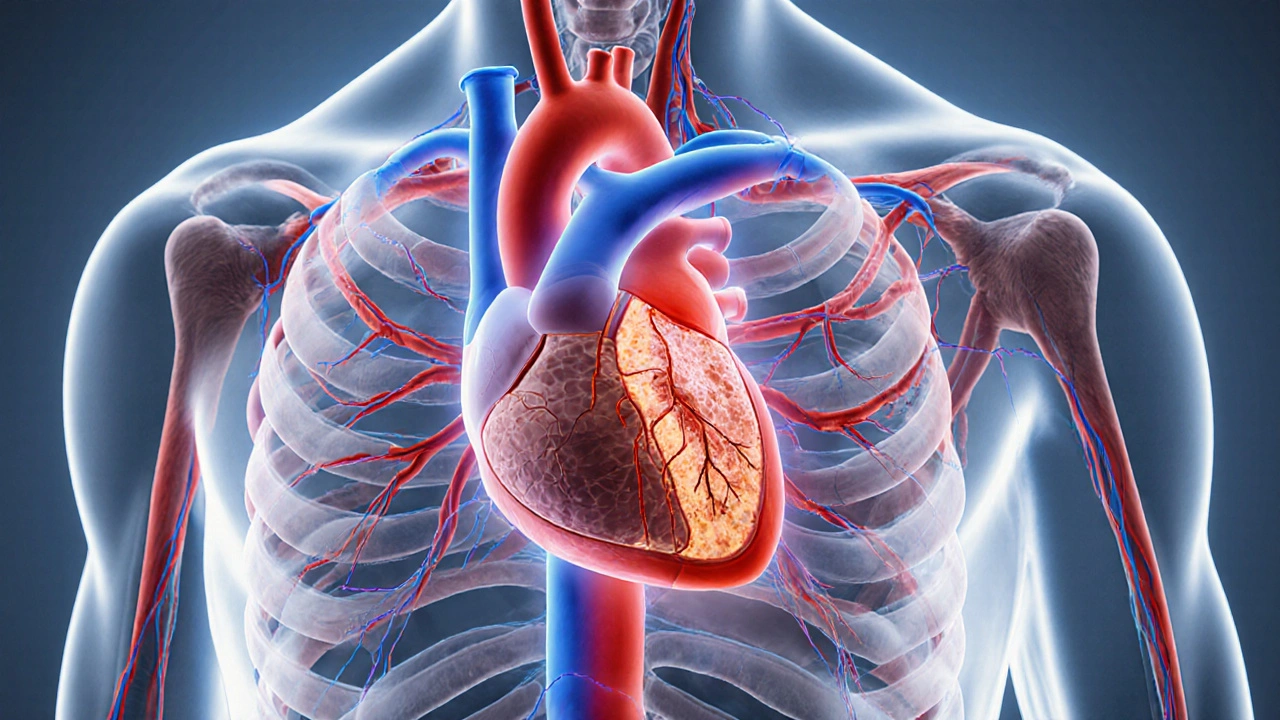Variant Angina: What It Is, Why It Happens, and How to Treat It
When dealing with Variant Angina, a form of chest pain that occurs when a coronary artery suddenly tightens. Also known as Prinzmetal's Angina, it typically strikes while you’re at rest and can feel just like a heart attack.
The underlying Coronary Spasm, a brief, reversible narrowing of a coronary vessel triggers the pain. Because the spasm is temporary, the heart muscle isn’t permanently damaged, but the sudden drop in blood flow can be scary. Variant Angina often shows up in younger adults, smokers, or people with a family history of vasospastic disorders. Stress, cold temperatures, and certain medications can also provoke a spasm.
Managing the condition usually means two things: preventing the spasm and relieving the pain when it occurs. Nitrate Therapy, medications that relax and widen blood vessels is a first‑line option; short‑acting nitroglycerin can stop an episode, while long‑acting nitrates reduce how often spasms happen. If nitrates aren’t enough, doctors often turn to Calcium Channel Blockers, drugs that inhibit calcium entry into arterial walls, keeping them relaxed. These meds are especially useful for people who continue to have episodes despite nitrate use.
Key Points to Know
Variant angina differs from the classic “stable” angina that shows up during exercise. Instead of a blockage caused by plaque, the problem is a functional tightening of the vessel. Because the episodes happen at rest, an electrocardiogram (ECG) taken during a pain event often shows transient ST‑segment elevation, which disappears once the spasm eases. Diagnosis may involve a provocative test with agents like ergonovine to reproduce the spasm under controlled conditions.
Lifestyle tweaks matter, too. Quitting smoking, managing stress, and avoiding extreme cold can cut the number of attacks. Some patients find that limiting caffeine or certain over‑the‑counter decongestants helps, as these substances can increase vascular tone.
In the long run, most people with variant angina lead normal lives once they’re on the right medication regimen and have made a few lifestyle adjustments. Regular follow‑up appointments let doctors fine‑tune doses and watch for any side effects, such as headaches from nitrates or swelling from calcium channel blockers.
Below you’ll find a curated collection of articles that dig deeper into each of these topics—how coronary spasms develop, the science behind nitrate and calcium channel blocker therapy, lifestyle strategies, and real‑world patient stories. Keep reading to get practical tips you can apply right away and a clearer picture of what to expect on your journey with variant angina.
Learn the four main types of angina, their symptoms, triggers, and when to seek help. Get clear guidance on recognizing chest pain and managing each form effectively.
